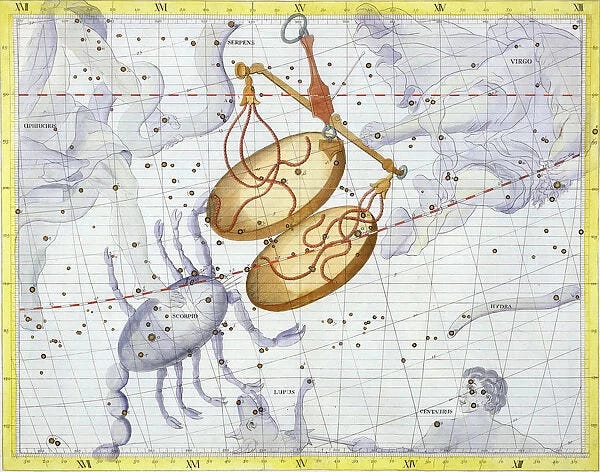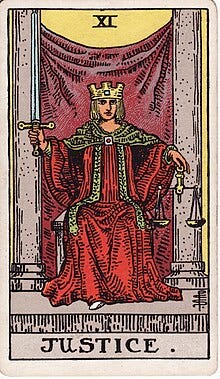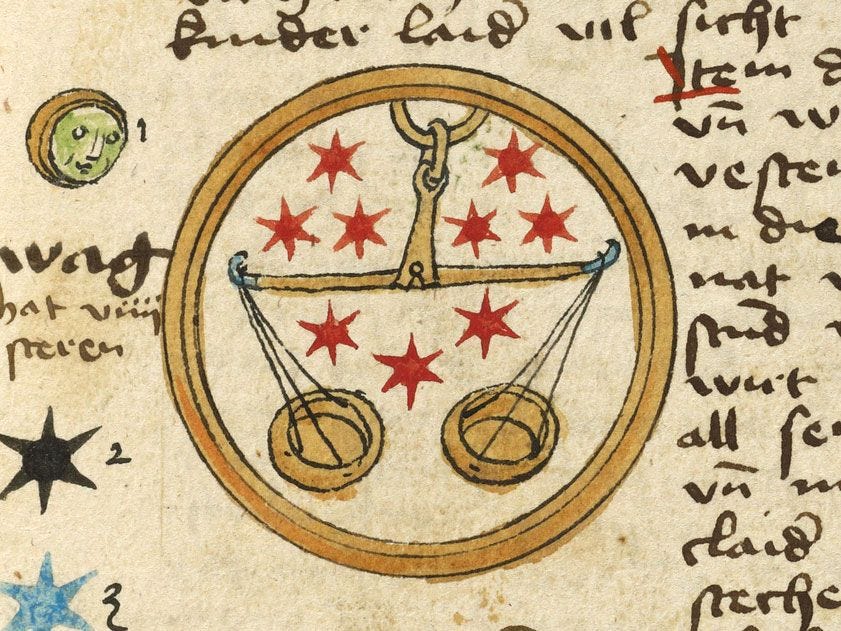
Libra is the beginning of a six-month journey into darkness. Libra season begins each year at the Fall Equinox, when the Sun descends in its daily arc across the celestial equator. Both of the equinoxes, spring and fall, mark a fleeting perfect balance of day to night in the 24-hour cycle. For each day following 0° Libra, the scales of light tip lower and lower in the Northern hemisphere. Night begins to take priority, consuming a few minutes of time each day in the fall as it becomes the primary ambiance in which we exist.
As the doorway into the shadowy half of the year, the sign of Libra has strong associations with various underworld legends of death and judgment. In 36 Faces, Austin Coppock makes a connection between Libra and the Egyptian mythos of the goddess Ma’at. As the divine personification of truth, order, and justice, Ma’at presided over a rite in the underworld called the “weighing of the heart” — in which the hearts of the recently deceased were measured against one of her feathers. In Egyptian culture, the heart — not the head — was considered to be the center of the self, holding memory, emotions, and character. The heart was also a record of how a person had lived, and each of their deeds was written upon it. To weigh the heart beside Ma’at’s holy feather was to read its account, and to determine whether it was truly at peace. Unburdened souls who passed the test were ushered into the afterlife, and those with heavy hearts were devoured and permanently annihilated by the monster-goddess Ammit. Serious business. In Egyptian funerary customs detailed in The Book of the Dead, this test was so important that spells for a heart-charm were included to help the departed attest to their virtue.
The connection that the weighing of the heart myth makes with the scales of Libra (meaning “balance” in Latin) is a deep one — the transition into autumn each year, with its reminders of death and endings, is a subtle invitation to turn inward and to question our conduct in light of our mortality. What is a good life? How do we know what’s right? Scales themselves serve as a clue. Scales are relational and relative — an item can only be weighed on them in relationship to another. According to Libra, it is perhaps only within the context of our relationships that virtue can be defined.
Names for the constellation of Libra across the Hellenistic world have included the Scales, the Balance, the Balance of Heaven, the Claws of the Scorpion, and the Boat. Originally considered a part of Scorpio by some Mesopotamian cultures, Libra began to be popularly recognized as its own constellation in ancient Rome around the 1st century. It was said that the Moon was in Libra at the time of Rome’s founding, a favorable omen of civility and refinement. In the night sky, the eight stars of Libra are pretty faint when visible. The brightest stars in Libra, Zubenbelgenubi and Zubeneschamali (now processed to 15° and 19° Scorpio, respectively), refer etymologically to the Arabic words for scorpion claws. In the star catalog of Ptolemy’s Almagest, he associates Zubenelgenubi with the harshest qualities of the malefics (violence, misfortune, danger, cruelty, etc.) and Zubeneschamali with the best themes of Jupiter and Mercury (honor, distinction, ambition). The polarized influence of these stars on the Libra constellation as a whole can be recognized in its motifs of morality and choice. Experiences of hardship can bring out the best and worst in the human spirit — helping us to weigh and measure the meaning of our lives and actions. Bernadette Brady, one of the primary modern authorities on fixed stars, describes these two as an inextricable pair that strongly appear in the natal charts of those who pursue mass social reform, often at great personal sacrifice.
Accordingly, the symbol of Lady Justice in the West (often enshrined inside courtrooms) is also rooted in the Libran mythos. The Romans depicted the Scales as held by the maiden of Virgo, who they related to Astraea, Greek goddess of innocence, justice, and fairness (in the pantheon of Hellenic gods, Astraea shares these concepts with Dike and Themis, who have also been depicted as Justice over the past two millennia). While earthly justice systems are notoriously fallible and have been in thrall to power since time immemorial, it is striking that the concept of divine justice, as a principle, is so pervasive across history and culture that it has never died (click the link for a list of 40+ gods of justice!). When we consider that the scales are an inanimate object (the only zodiac sign depicted as such) tied so strongly to ideals of righteousness, the meaning of Libra emerges in many ways as aspirational. Justice, truth, and moral order are beautiful ideals that we look up towards and try to re-create, like the images of the gods and goddesses who embody them. In everyday life, the scales are not static, and the pursuit of what is good and true never ends.
Astrologically, Libra is ruled by sensuous Venus. As a goddess of love, romance, sex, art, pleasure, connection, and friendship, Venus presides over what and who we are attracted to, what delights us and brings a sense of harmonious, enchanting, peaceful happiness. How are these subjects tied with the thread of justice that is so essential to this sign? In Aphrodite’s Justice, the twentieth-century archetypal psychologist James Hillman argued that justice and beauty are intertwined — and that aesthetics and morals are frequently closer companions than we’d like to admit. Hillman wrote, “the long history of Christianized philosophy has driven ethics from aesthetics, justice from beauty so that we customarily believe that you cannot be both good and beautiful, ethical and alluring. Nor can the pleasures of the senses be the path to truth. A piece of art or a novel may be recommended for its moral instruction. In its morality lies its beauty. But never does the Christian divide admit that in its very beauty is its morality, since beauty works as a calling to better things, pulling at the heart to love, to the mind to imagine more vividly. Moreover, morality without beauty stifles both heart and mind, boring, dull, it does not take hold, does not prompt the Justice it advocates.” There’s a lot to unpack in that section, but I believe that it is one answer to the question above. We need beauty to make life worth living and goodness worth doing. And by that, I mean not the consumerist, toxic, ephemeral, reinforcing-shitty-social-norms variety of beauty, but rather capital B, original-definition-of-awe-level BEAUTY. The kind of beauty that accompanies joy and reverence. The kind that naturally arises through love, play, care, and connection to our environment, shared spaces, communities, relationships, and true selves. Venus’s rulership of Libra reminds us that creating, curating, and appreciating beauty and art are vital activities for personal fulfillment and for expressing our highest ideals. And it also returns us to the idea that truth and justice are relational activities, acted out in intimate arenas as much as in the wider social milieu.
In the correspondences between astrology and the Tarot (as set by the Hermetic Order of the Golden Dawn), Libra is depicted by the major card of Justice. Within the Tarot imagery of the air element, illustrated as The Fool, the air signs play out a story through Justice (Libra), The Star (Aquarius), and finally The Lovers (Gemini). This is a tale of taking a chance, finding hope despite pain, and learning how to commit. In the serious, dead-on stare of the Justice card, we see our first way-station along the journey: choice. Choices hold weight — they have consequences. How do we make good decisions? There are a few answers to this that are born out by the Minor cards below, but hold on to our plot points about beauty and connection, as well.
The decans of Libra, represented by the 2, 3, and 4 of Swords, break down the experience of choice into smaller vignettes. As a suit, Swords symbolize “cutting and penetration, but also acts of discriminating, discerning, making a judgment,” as Paul Huson describes in The Mystical Origins of the Tarot. The 2 of Swords, representing the first decan of Libra, which is Moon-ruled, brings in elements of the High Priestess into our story of Justice. There is a meditative quality to this card, showing the need to tune out distractions and to turn inward when we must make a decision. To listen for the quiet voices of conscience and soul. It also shows the dangers of getting stuck too long in a contemplation phase — the mind, like the Moon, is a fluctuating thing. To retreat too deeply into its recesses and avoid choice is to risk closing oneself off from life. In the 3 of Swords, we see a pierced heart that resonates with the finality of making a hard decision, or the anguish of having it made for you. This card, corresponding to the Saturn-ruled second decan of Libra, is not always as heartbreaking as it seems, though. In the Picatrix, this decan is associated with the bonds of marriage and the security that a successful union can provide. Saturn, lord of maturity, is exalted in Libra, and in a sense this midpoint of the Libra story is about the recognition that the choices that bind us to consequence make us who we are. Without risking loss or disappointment, we will gain very little and grow barely at all. To be a fully-grown, Saturn-approved adult is to make promises, and to learn how to keep them. Finally, the third decan, which is Jupiter-ruled, shows a figure at rest in a church scene. This card often puzzled me in early experiences of receiving it — is it a statue? a tomb? a dead guy? a person taking a nap? Aleister Crowley deemed this minor the “Lord of Truce,” suggesting the natural pause that is created when we decide to compromise, step back, or accept something as is. This seems especially relevant to Libran themes of relationships. The 4 of Swords can also represent the adjustment phase that comes after making a big decision or experiencing change, in which we need to lay fallow for a while. The religious setting of this card seems like a nod to the spiritual (and institutional) aspects of Jupiter. When I meditate on the stained glass window, I’m reminded of the perennially funny (and somewhat wise) bumper sticker “let go and let God.” Sometimes when we make a choice, we just have to allow the scales of the universe to tip and sway as they might, recognizing our own healthy limitations in the process. Eventually, things will even out.
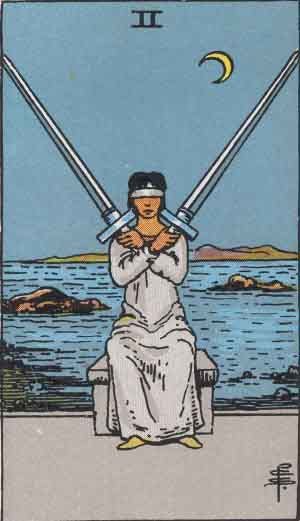
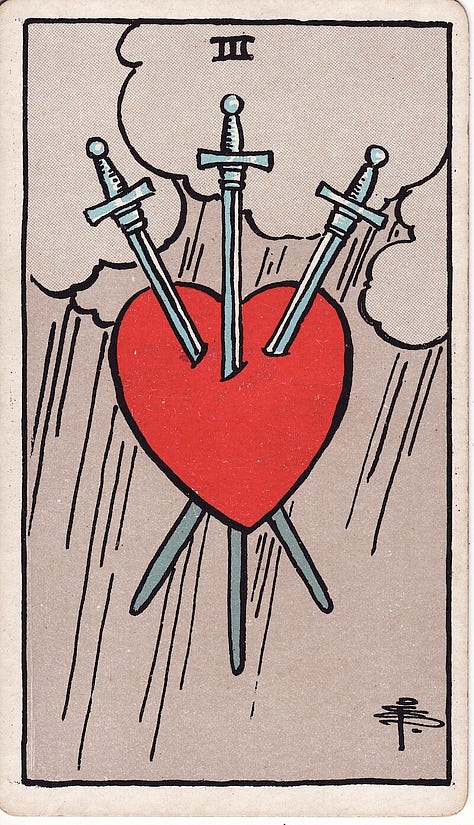

Libra season is a prompt to balance our scales — internally, relationally, and socially. Wherever Libra falls in your chart, beauty, justice, honesty, equilibrium, and choice will be recurring themes, activated more or less in different years, depending on other factors and timing techniques. This particular Libra season has been very intense, as a Solar eclipse kicked off the lunar cycle and planets transiting through Libra have made squares to both Mars and Pluto — raising the stakes and testing our resolve on key decisions by adding pressure. For more details about this month’s astrology, check out my October forecast.
Check out my workbooks and classes.
❤️❤️❤️





